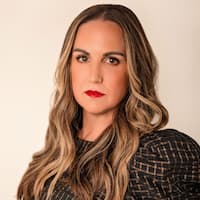CarInsurance.com gets thousands of questions about auto insurance policies. Here are the top questions our readers ask about what their policies cover.
If you don’t see the answer to your question, you can ask your question here.
What does liability insurance cover?
Liability insurance protects car owners whose vehicle injures others or damages their property. It does not cover the insured vehicle itself, so neither is your car covered nor your injuries. There are two types of liability coverages, bodily injury and property damage.
- Bodily injury coverage pays for medical expenses and lost wages of people you have injured in an auto accident.
- Property damage covers damages you have caused to someone else’s property, such as their vehicle, house or fence.
What does 25/50/23 mean?
Liability coverages are commonly referred to by their maximum limits in thousands, such as 25/50/25. The first and second numbers stand for your bodily injury liability limits, which are $25,000 per person and $50,000 per accident. The third number represents your property damage liability limit of $25,000 per accident.
What is full coverage?
There’s no such thing as full coverage because no policy can cover every peril or situation. Most commonly, full coverage is what people label car insurance policies that have liability coverages along with collision and comprehensive physical damage coverages.
- Collision covers damage to your car when it hits or is hit by another vehicle or other object.
- Comprehensive covers your car for those damages from non-collision causes, such as vandalism, hail, animals or theft.
What are the recommended limits for liability car insurance?
State liability limits are typically low; a severe accident can easily exceed the limits of minimum auto insurance policies, leaving the personal assets of the car owner at risk.
The insurance industry recommends bodily injury liability coverage of $100,000 per person and $300,000 per accident and property damage liability of $100,000. This is shown as 100/300/100. The cost for recommended liability limits isn’t much more than the bare-bones coverage, your state minimum liability requirements, that you need to drive legally. To compare prices for different coverage levels, use CarInsurance.com’s average car insurance rates tool that shows costs for policies by ZIP code, age group and liability limits.
What is an SR-22?
An SR-22 is a form filed with the state verifying that you have a current car insurance policy with state-mandated coverages. The particular limits that are required vary from state to state; some require higher liability limits.
Often the SR-22 is required after certain convictions, such as a DUI or driving without insurance, or to reinstate your license after a suspension, and in most states, it must be maintained for three years.
Who do I have to list as drivers on my policy?
You must list all household members in your residence when applying for insurance and anyone who frequently operates your vehicle even if they don’t live with you.
Most insurers include those listed as drivers on the policy. Some allow you to exclude a driver from the policy or not rate a person on the policy (like an unlicensed 15-year-old).
Failure to list all drivers could result in a lack of proper coverage, an increase in payment or the denial of a claim.
How can I save money on my policy?
Readers also often ask how to get the cheapest car insurance that still provides sufficient protection. The best way to find the most affordable price is to be sure you compare auto insurance rates at least once a year, but also if you move, buy a new car, get married or add or drop a driver.
All of these factors influence what you pay, and your current carrier may no longer be the most affordable if you have a change of circumstances. That’s because no two insurers will have the same price for the same policy. Insurance companies each have their formula for assessing risk and setting prices. This means the price for a policy will vary by hundreds of dollars among different insurance companies. So, if you don’t compare rates, you can wind up overpaying.
— Michelle Megna contributed to this story.





